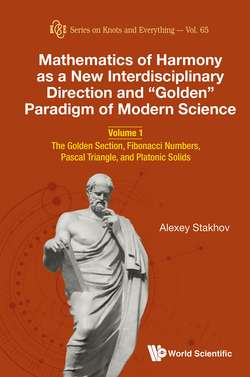Читать книгу Mathematics of Harmony as a New Interdisciplinary Direction and “Golden” Paradigm of Modern Science - Alexey Stakhov - Страница 24
На сайте Литреса книга снята с продажи.
1.2. The Golden Section in Euclid’s Elements
ОглавлениеEuclid’s Elements is the greatest mathematical work of the ancient Greeks. Currently, every school student knows the name of Euclid, who wrote the most significant mathematical work of the Greek epoch, Euclid’s Elements. This scientific work was created by him in the third century BC and contains the foundations of ancient mathematics: elementary geometry, number theory, algebra, the theory of proportions and relations, methods for the calculating areas and volumes, etc. In this work, Euclid summed the development of Greek mathematics and created a solid foundation for its development (Fig. 1.3).
The information about Euclid is extremely scarce. For the most reliable information about Euclid’s life, it is customary to relate the little data that is given in Proclus’ Commentaries to the first book of Euclid’s Elements. Proclus points out that Euclid lived during the time of Ptolemy I Soter, because Archimedes, who lived under Ptolemy I, mentions Euclid. In particular, Archimedes says that Ptolemy once asked Euclid if there is a shorter way of studying geometry than Elements; and Euclid replied that there was no royal path to geometry.
Fig. 1.3. Euclid.
Plato’s disciples were teachers of Euclid in Athens and in the reign of Ptolemy I (306–283 BC). Euclid taught at the newly founded school in Alexandria. Euclid’s Elements had surpassed the works of his predecessors in the field of geometry and for more than two millennia remained the main work on elementary mathematics. This unique mathematical work contained most of the knowledge on geometry and arithmetic of Euclid’s era.
Fig. 1.4. Division of a segment in the extreme and mean ratio.
